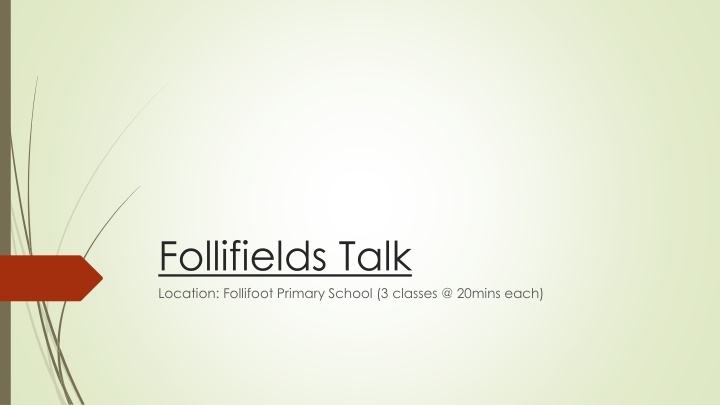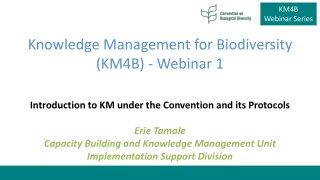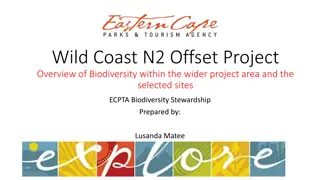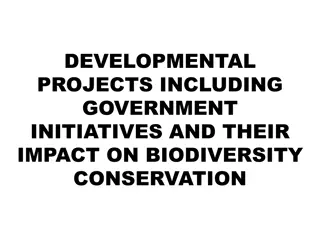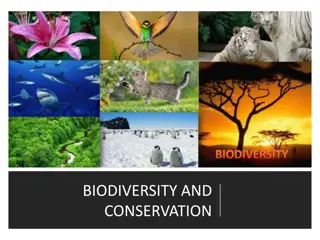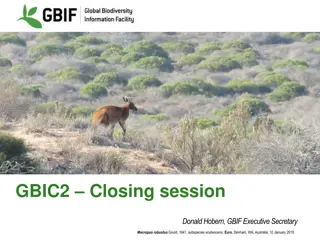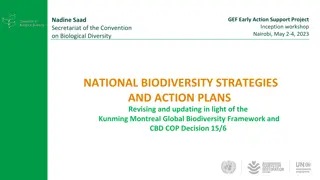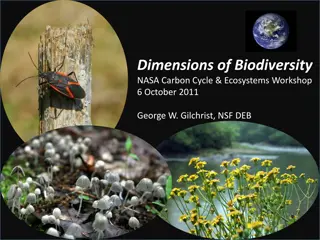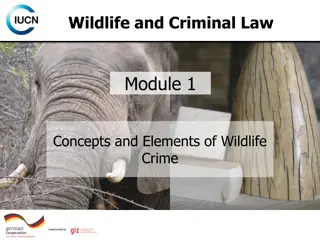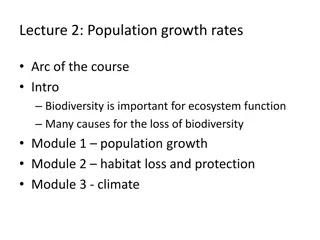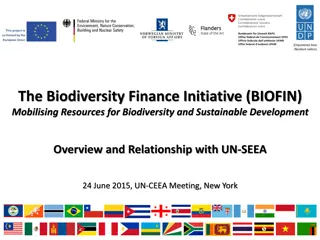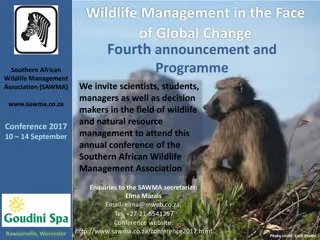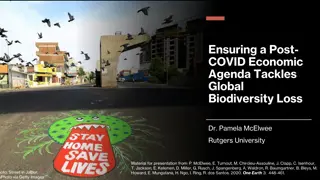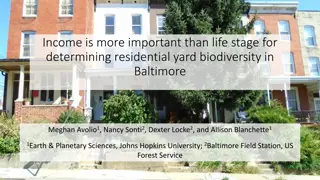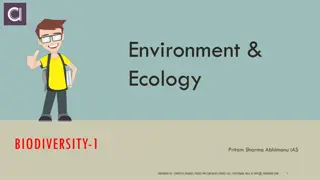Encouraging Wildlife and Biodiversity at Follifoot Primary School
Learn about the diverse wildlife attracted to Follifoot Primary School, including red kites, hedgehogs, foxes, and more. Discover signs to look for, ways to encourage wildlife, and the importance of biodiversity. Find out how you can contribute by creating wild spaces and observing nature around you.
Download Presentation

Please find below an Image/Link to download the presentation.
The content on the website is provided AS IS for your information and personal use only. It may not be sold, licensed, or shared on other websites without obtaining consent from the author.If you encounter any issues during the download, it is possible that the publisher has removed the file from their server.
You are allowed to download the files provided on this website for personal or commercial use, subject to the condition that they are used lawfully. All files are the property of their respective owners.
The content on the website is provided AS IS for your information and personal use only. It may not be sold, licensed, or shared on other websites without obtaining consent from the author.
E N D
Presentation Transcript
Follifields Talk Location: Follifoot Primary School (3 classes @ 20mins each)
What Wildlife might the site attract? Red Kites (opportunistic hunters) Hedgehogs Foxes Badgers Field Mice Rabbits Roe Deer Owls (Tawny or Barn) Squirrels (Grey) Bats Insects: Bees, butterflies, beetles, moths
Signs to look for: Tracks in soft ground, muddy areas or molehills Droppings or Scat containing fur, bone, feathers and insect casings Scent markers a strong musky odour or scent Scratching marks on trees, rocks or fence posts A well worn, flattened path through grass or plants Remains of eaten food: feathers, bones, empty nut shells or fruit stones
How we encourage wildlife: We create somewhere they want to live Provide a wide variety of different plants, trees and flowers to encourage insects. Attract a wide variety of insects attracts small mammals (mice, voles, rabbits) Plant Trees Grow a hedge Grow wildflowers Create a wilderness area Put up nest boxes Protect existing habitats Don t drop litter or damage trees and plants
Why we encourage Wildlife and Biodiversity. Biodiversity is a term which simply means 'the variety of life Biodiversity is life. Scientists use the word to describe the links andvariety between all living things on the planet including humans. All life is connected, even if we can not see the connections. We encourage wildlife, plants and animals, to create a healthy, sustainable balance of life. By planting lots of different plants we encourage many insect types. These attract birds, small mammals, bats. Larger animals feed on the smaller. Trees provide both food and shelter for many animals, birds, insects and plants We all rely on biodiversity for our survival, because of the vast number of goods and services our planet provides for us.
What you can do. Listening and looking for wildlife. Talking time to sit and watch the insects, the birds and other creatures. When you are quiet you are more likely to see things then when you are noisy. Not dropping litter which can harm animals and looking after the trees and plants, new and old. Create wild spaces at home in your garden or in your school Make a list of plants and creatures you see: insects, birds and animals. Plants flowers to attract bees .bees are vital for biodiversity
Beesquick facts 70 of the top 100 food crops in the world rely on bees to pollinate them. These 70 provide 90% of the world nutrition 80% of flower plants depend on pollination. (and trees) Without bees we would have no almonds, apples, avocados, blueberries, cantaloupes, cherries, cranberries, cucumbers, sunflowers, watermelon etc Bees can see the colour purple best so plant purple flowers (Buddleja, Lavender, Alliums and clover) Bees can tell us how healthy, or well, our environment is.
Additional facts: Rain forest More than half the world's approximately 10 million species of plants, animals and insects live in the tropical rain forest At current rates of loss, the rainforests will be completely gone in forty years. As a result of rainforest destruction, approximately half the world's species of plants, animals and insects will be destroyed in the next 25 years. Due to rainforest destruction, the earth loses an estimated 137 plant, animal and insect species every day. 25% of Western pharmaceuticals are derived from rainforest materials
Additional Facts: The Northern Forest over 50 million trees over 25 years. It will stretch from Liverpool across to Hull Improving air quality in our towns and cities Reducing flood risks Increased tourism, recreation and timber production Connecting people with nature Improvements to health and wellbeing through welcoming and accessible local green spaces. 800th anniversary of the 1217 Charter of the Forest. 2017: Charter for Trees, Woods and People, reflecting the modern relationship with trees and woods in the landscape for people in the UK
Specific Trees and inhabitants. Oak: 20-40m / 500 species supported/40 years before acorns/150 years before wood can be used for construction (Purple hairstreak butterflies.) Silver Birch: 30m+/229 species of insect/improves soil quality/leaves attract aphids for ladybirds/ leaves food for moths (pebble hook-tip moth) Hawthorn: 300+ insects/flowers eaten by Dormice/fruits by birds and small mammals/shelter for bird nests Apple: 93+/ thrushes feast off fallen fruit and bullfinches are partial to the buds. Bushy specimens are excellent nesting spots for blackbirds. Beech: 40m+/64+/ bark is often home to a variety of fungi, mosses and lichens. (Orchids-red helleborine) seeds are eaten by mice, voles, squirrels and birds
